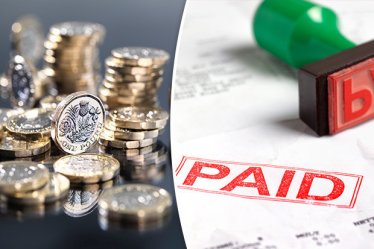
Whenever things are going really well — as is the case right now on Wall Street and probably in your retirement portfolio — it's only natural to want to leave things be. Why try to fix what's not broken? But even the most patient buy-and-hold investors understand that you must revisit your strategy from time to time to make sure things are unfolding as you originally envisioned. The end of the year, when your thoughts are naturally focused on family, the coming year, and to-do lists, is a perfect time to do just that. To make this process easier, MONEY has put together a checklist of seven important steps to take now before the year ends to set your investment portfolio up for 2018 and beyond.
- Remember to give yourself a raise.
Chances are, you got a slight bump in pay this year—perhaps a modest cost-of-living adjustment or a merit raise. Average pay for American workers rose a little over 2% over the past 12 months.
If you can, boost your 401(k) savings rate by that amount in the New Year.
The beauty of an employer-sponsored 401(k)—especially one where you're automatically enrolled—is that inertia works for you. You don't have to keep remembering to sock away money into your retirement account. Your company automatically does that for you with each paycheck.
But inertia cuts both ways. If you simply stay the course and fail to raise your contribution rate periodically, you're leaving money on the table. That's because over time, being an aggressive saver and mediocre investor beats being a good investor with just average saving habits.
Case in point: A 35-year-old making $75,000 a year, putting 7% of pay in a 401(k) and earning a better-than-average 10% annual return would have nearly $1.2 million after 30 years. That same worker who socks away the recommended 15% of pay while earning more-typical 7% annual gains winds up with $1.4 million. "Your goal should be maxing out your retirement contributions. If you can't do it all at once, adjust your savings rate gradually over time," says Jan Blakeley Holman, director of adviser education at Thornburg Investment Management.
And if you're 50 or older, remember to play catch-up. The IRS allows older workers to stuff an added $6,000 into their 401(k) s. The 2018 cap for workers under 50 is $18,500.
Case in point: A 35-year-old making $75,000 a year, putting 7% of pay in a 401(k) and earning a better-than-average 10% annual return would have nearly $1.2 million after 30 years. That same worker who socks away the recommended 15% of pay while earning more-typical 7% annual gains winds up with $1.4 million. "Your goal should be maxing out your retirement contributions. If you can't do it all at once, adjust your savings rate gradually over time," says Jan Blakeley Holman, director of adviser education at Thornburg Investment Management.
And if you're 50 or older, remember to play catch-up. The IRS allows older workers to stuff an added $6,000 into their 401(k)s. The 2018 cap for workers under 50 is $18,500.
- Fix your mix of stocks and bonds.
"We're entering the ninth year of a bull market, and we've hit more than 45 new highs just this year alone," says Francis Kinniry, a principal in Vanguard's investment strategy group. "Chances are, rebalancing will be an issue."
So take care of it now, to set your portfolio up for success in the coming year.
If you started out with a moderate 60% stock/40% bond portfolio five years ago—and neglected to routinely reset that mix back to your original strategy—your portfolio would have drifted into a far more aggressive 75% equity/25% fixed-income strategy. That may seem harmless, but in the event of a market downturn, having 75% of your nest egg in stocks will lead to far greater losses than a moderate 60% equity stake.
Research shows it actually makes little difference when you rebalance—at year-end, on your birthday, or whenever your allocation drifts slightly. So now is just as good a time any.
But if you are resetting your allocation, remember "that the best way to rebalance is the most tax-efficient way," says Kinniry.
Before you start selling your winning investments—which will trigger a tax bill—start by redirecting new contributions for the following year into lagging investments. In other words, since your stocks have been outperforming your bonds by a wide margin, use most of your new contributions to pad your fixed-income exposure. Also, rather than reinvesting dividends and gains back into the same funds; use those distributions to add to your weakest-performing asset class.
- Maximize your other tax shelters.
As you "top off" the contributions you're making to your 401(k), don't forget to fund all your other tax-sheltered investment accounts that often get overlooked.
Start with your IRAs. While most Americans with income have access to at least one type of individual retirement account—a traditional IRA, a Roth, a spousal IRA, or even a nondeductible account—only 33% of Americans currently contribute to these accounts. You can save up to $5,500 in 2018 or $6,500 if you're 50 or older.
Though you have until April 15, 2019, to make your 2018 IRA contribution, don't delay. By immediately contributing when you're eligible on Jan. 1, you'll maximize the impact of that tax-deferral.
In addition to IRAs, don't overlook health savings accounts. "HSAs are kind of a stealth retirement savings vehicle," says Rob Williams, director of income planning for the Schwab Center for Financial Research. That's because HSAs are triple tax advantaged: Money goes in tax deferred, grows tax sheltered, and, if withdrawn for qualified medical expenses, comes out tax-free.
You're likely to have plenty of those costs in retirement, which, if not addressed, can eat into your nest egg. A recent Fidelity analysis found that a typical 65-year-old couple retiring this year can expect to spend $275,000 in health-related expenses throughout the course of their retirement.
To qualify, you have to be covered by a high-deductible health plan. In 2018 the maximum contribution for an eligible individual is $3,450. For families, it's $6,900. As with other tax-deferred accounts, it's important to max out if you can, yet only 15% of HSA users actually do.
- Make sure your hatches are battened down.
Diversification serves many purposes. In addition to ensuring that some of your money is held in assets that outperform when times are good, you're also making sure that you have some exposure at all times to investments that are likely to hold up in a market storm.
But how sure are you that you have enough defensive investments heading into the New Year?
"Everyone should look at their accounts now and make sure they have some ballast," says financial planner Lewis Altfest.
What steps should you take? After a spectacular year for equities in 2017—with the Dow Jones industrial average up more than 20%—now's the time to "trim some of the high-flying stocks with high P/Es," he says, referring to companies sporting lofty price/earnings ratios. That's because in a market downturn, stocks with high P/E ratios tend to fall more.
Altfest says you can replace those holdings with exposure to defensive stocks, such as shares of consumer-staples companies that make things people need, not want, like toothpaste and soap. You can also look to economically insensitive companies such as drug makers that aren't reliant on a robust economy to thrive.
And if you're worried about market turmoil in the coming year, now is a good time to trim some of your holdings in non-investment-grade "junk" bonds. This is debt issued by companies with less-than-pristine balance sheets and financials.
Because of that risk, junk bonds have historically acted more like stocks than bonds. In 2008, for instance, the typical junk-bond fund lost nearly 30% of its value, according to Morningstar, which was on par with the 37% decline for the S&P 500 index of blue-chip stocks.
- Make your wish list.
If the goal of investing is to buy low and sell high, at some point you have to commit to investing in assets that are beaten down or unloved. Alas, after nearly nine years of rallying, stocks are pretty expensive across the board.
But just as you put together a Christmas shopping list well before the holidays, investors ought to list the stocks they'd like to own before the next downturn comes around so they'll know what to buy once the price is right. Among highly profitable companies that will trade at single-digit price/earnings ratios if their shares fall by a third (which is typical in a bear market): Apple (ticker: AAPL), Intel (INTC), HP (HPQ), and Applied Materials (AMAT).
Meanwhile, as you wait for buying opportunities to open up after a downturn, you can start putting new money to work now in the one place that's relatively cheap: foreign stocks.
"We have a significant position—40% if you X-ray our funds—in international securities," says Altfest. "They're all cheaper than the U.S.," he says, adding that not only is Europe growing faster than the U.S. now, many foreign economies, including the emerging markets, aren't as far along in their recoveries as is America.
In our MONEY 50 recommended list, you can go with Vanguard Total International Stock Index (VGTSX) for broad exposure or T. Rowe Price Emerging Markets Stock (PRMSX), focusing on the fast-growing emerging markets, which trade at a P/E ratio half that of the U.S.
- Harvest your tax losses.
Admit it: You hate it when the government takes a cut of your profits every time you sell any investment that has gone up in price. But you can get Uncle Sam back by making him share your pain when you sell investments that have lost value. It's called tax-loss harvesting, and "now's the time to be looking at that strategically," says Schwab's Williams.
Isn't selling at a loss admitting defeat? It doesn't have to be. When you sell a stock or fund at a loss, you are realizing the loss for tax purposes. And you can use that loss to reduce your taxes—by offsetting gains elsewhere in your portfolio or reducing ordinary income up to $3,000.
But you can turn around and reinvest in the same type of asset, as long as it's not "substantially identical." Or wait 30 days and step back into the exact same investment.
- Check your automated settings.
When in doubt, put it on autopilot. In most situations, that's wise financial advice. "There's a huge benefit to having your accounts automated, so that contributions are automatically deducted into your 401(k) and invested for you without requiring you to think about it," says Holman.
It goes well beyond putting money into a 401(k), though. Automation now allows for savings rates to be increased over time, or for your portfolio to be rebalanced at periodic intervals, or even for tax losses to be realized.
Still, "you need to check on your autopilots annually to see what's being deducted and how it's being invested," says Holman.
Start by making sure your 401(k) contribution increases aren't too conservative. Many plans allow for savings rates to rise by one or two percentage points a year. If you can afford more, override the autopilot to put your portfolio on a faster path. Also, make sure the stock-and-bond mix that you are being automatically rebalanced into is still appropriate for you. Chances are, you set up your allocation strategy several years ago and may have forgotten about it. But as the end of the year should remind you, time marches on quickly. And things change.


 Log in with Facebook
Log in with Facebook 









